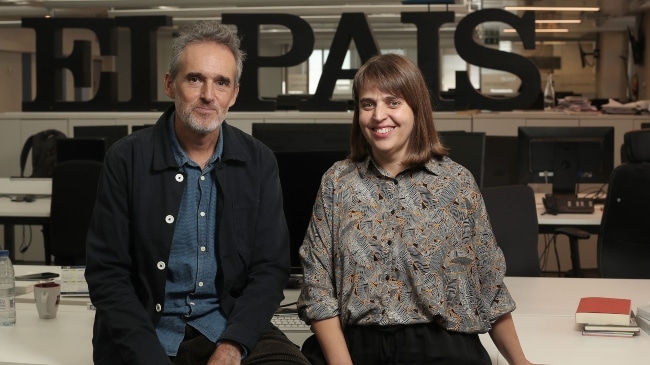In 2020, El País made a decisive pivot that many Spanish media outlets had delayed for years: launching a full
paywall and restructuring its entire newsroom to prioritise digital-first journalism. In this interview, Mari Luz Peinado, Editor-in-chief of Digital Strategy discusses how this transformation required reversing
decades of workflow—creating a separate curation team for print while the main newsroom focuses on continuous
digital publishing across multiple Latin American editions.
Mari Luz Peinado explains how subscription-based journalism demands more analysis and context rather than speed.
She also explains why El Pas relies heavily on proprietary data metrics to understand subscriber behaviour, and how
the publication is experimenting with AI as a search and sourcing tool while refusing to use it for content
creation. As European media face competition from (mostly American) Big Tech and AI-generated content, the
conversation reveals why collaboration, transparency, and distinctly human journalism—investigation, interpretation,
and storytelling—remain essential for building trust and sustaining quality news organisations in an increasingly
automated information landscape.
Before becoming Editor-in-chief of Digital Strategy, Mari Luz Peinado was the director of Verne, for which she received the José Manuel Porquet Digital Journalism Award alongside Lucía González. Previously, she was an editor at EL PAÍS in Mexico and worked at S Moda, MSN and Soitu.es. She writes the weekly newsletter “Correo sí deseado” (Wanted Mail), which selects positive stories that offer solutions. She is responsible for the design and implementation of initiatives to accelerate the digital transformation of the newsroom, the creation, and development of new online products. With the help of Mari Luz Peinado El País has reached more than 400,000 subscriptions in less than 5 years.

CU: When did you finally decide to go all-in with a paywall?
MLP: We had been preparing for years with a registration model first—a
“soft paywall” to study user behaviour. When we launched the full subscription model in 2020, we realised digital
had to be the absolute priority. So we made a deep transformation inside the newsroom. Everything became digital
first. We created a separate team of editors just for the print edition—they no longer write content. So you can
say we came to the party with a delay, but it wasn't just El País—it was common among Spanish media. We came to the subscription model later than other European countries, even though we have the American market.
CU: So it became the opposite of before? How does the print team work?
MLP: Exactly. We call them the “edition team” They curate and edit, talking
constantly with every desk to determine the strongest stories for the day. This print team has a strong head editor
who can decide what goes into the print edition. And of course we changed the workflow. We used to have a big
editorial meeting at 6 p.m. to decide the print front page. Now we have two separate meetings—one at 10 a.m. to set
the daily agenda and another at 5 p.m. with the director's board. We start and finish earlier for print. But the
website never stops. After midnight, our team in Mexico takes over. We've had that setup since 2012. At first, they
handled only the homepage and breaking news, but now it's a full newsroom. We have editions for Mexico, Colombia,
the U.S., and Argentina.
Subscriptions and Content Strategy
 CU: How
have these transformations affected production and reporting?
CU: How
have these transformations affected production and reporting?
MLP: We now produce more opinion and analysis pieces. Under the
subscription model, if we only offer news—the same that people can get free from radio or notifications—they won't
pay. Most readers already know the headline before they visit El País. What makes them pay is analysis—putting the
pieces together, providing interpretation, depth, and context. Of course, exclusives and investigative reporting are
still the foundation. But if you're just fighting to be the first to publish a politician's statement, that's not
something people will pay for. They'll pay for interpretation, investigations, and visual storytelling.
CU: Is speed still important?
MLP: Not as much.
CU: What drives your traffic retention now in the digital environment?
MLP: Innovation is more relevant for engagement than for conversion. It
helps retain subscribers and keep them active more than it helps acquire new ones. By covering topics that affect
their daily lives, not only big exclusives. When people pay for media, they expect both depth and relevance. Readers
might subscribe because of a special article or a powerful interview, but to keep them, you need to offer more. They
expect to be informed about everything—from politics to sports, from quarantine updates to cooking. You have to
serve multiple communities and interests.
"If journalists use it [AI] as a tool for analysing big databases, that's wonderful. It can help us find stories and uncover corruption. When people say 'AI will replace journalists,' maybe it will replace those who only copy and paste press releases."
CU: In the analogue world, audiences were more or less fixed along social,
political and ideological positions. How do you know what to produce now, and most importantly, who are you
producing for?
MLP: We rely heavily on data. El País has a very strong data team within
the newspaper. We even have our own metrics system focusing on conversion—how subscribers behave, how long they read, and what content they consume. For example, I pay close attention to which articles are most read by subscribers.
Data journalists analyse subscriber reads, reading time, reach, and engagement. Because it's still vital to reach
more readers. Without growing the audience, there's a ceiling to everything else.
CU: And how do you target audiences online?
MLP: Next year, we'll celebrate our 50th anniversary, so we're a very
established brand. Our main source is direct traffic—people typing elpais.com directly. El País has over 400
employees worldwide—probably the largest network of Spanish-speaking correspondents—so we are generally speaking
“relevant” to our audience's needs.

AI and the Future of Journalism
CU: How do you see AI affecting the industry?
MLP: We're experimenting—but we’re using it as a tool, not as a content
creator. Last year, we launched an assistant for subscribers. If you're using the El País app, you can ask it
questions about any topic. It's powered only by El País's archives, not the open internet.
CU: And how accurate is it?
MLP: It’s not bad at all. Think of it as a smarter search engine—like
Google, but only for El País content. It gives short explanations and links to relevant articles. We've updated our
style book to include AI guidelines, explicitly stating that we cannot produce content without human supervision.
So, for now, we produce nothing with AI. Even El País Express is entirely human-made—a small team selects and
explains the top stories, why they matter, and what comes next. I need to add that we're not using AI, but we are
aware that we're competing with it. Many outlets now use AI to publish hundreds or thousands of articles daily.
People find content through Google Discover, and often they don't even know if an article was written by a human or
AI.
"Most readers already know the headline before they visit El País. What makes them pay is analysis—putting the pieces together, providing interpretation, depth, and context."
CU: How do you see the European media landscape coping with the AI
wave?
MLP: We think that one of the most important things we need to do is
collaborate more. Our real competitors aren't other media any more—they're Big Tech. We should collaborate more and
learn from other regions, like Latin America, where media are more flexible and experimental. From a journalistic
viewpoint, the key challenge is to explain how we do our work—to be more transparent. Journalism often feels
detached from people. This polarisation could actually be a chance for the media to rebuild trust.
CU: So you don't see AI as the main challenge?
 MLP: AI is a
challenge for sure since it can produce hundreds of articles, but journalism is about discovering new
information—and that's something AI can't do on its own. If journalists use it as a tool for analysing big
databases, that's wonderful. It can help us find stories and uncover corruption. When people say “AI will replace
journalists,” maybe it will replace those who only copy and paste press releases. Let AI do that, and give us
journalists the time to investigate, innovate, and think deeply. The problem I see is that many media companies are
short-term thinkers. They want immediate results—to produce more and get more clicks. That's the wrong use of AI. In
that race for volume, you end up flooding the internet with endless text, so much that real journalism can get lost
in the noise. That's why we're here, to prevent that from happening.
MLP: AI is a
challenge for sure since it can produce hundreds of articles, but journalism is about discovering new
information—and that's something AI can't do on its own. If journalists use it as a tool for analysing big
databases, that's wonderful. It can help us find stories and uncover corruption. When people say “AI will replace
journalists,” maybe it will replace those who only copy and paste press releases. Let AI do that, and give us
journalists the time to investigate, innovate, and think deeply. The problem I see is that many media companies are
short-term thinkers. They want immediate results—to produce more and get more clicks. That's the wrong use of AI. In
that race for volume, you end up flooding the internet with endless text, so much that real journalism can get lost
in the noise. That's why we're here, to prevent that from happening.
Images: Courtesy of El Pais










 CU: How
have these transformations affected production and reporting?
CU: How
have these transformations affected production and reporting?
 MLP: AI is a
challenge for sure since it can produce hundreds of articles, but journalism is about discovering new
information—and that's something AI can't do on its own. If journalists use it as a tool for analysing big
databases, that's wonderful. It can help us find stories and uncover corruption. When people say “AI will replace
journalists,” maybe it will replace those who only copy and paste press releases. Let AI do that, and give us
journalists the time to investigate, innovate, and think deeply. The problem I see is that many media companies are
short-term thinkers. They want immediate results—to produce more and get more clicks. That's the wrong use of AI. In
that race for volume, you end up flooding the internet with endless text, so much that real journalism can get lost
in the noise. That's why we're here, to prevent that from happening.
MLP: AI is a
challenge for sure since it can produce hundreds of articles, but journalism is about discovering new
information—and that's something AI can't do on its own. If journalists use it as a tool for analysing big
databases, that's wonderful. It can help us find stories and uncover corruption. When people say “AI will replace
journalists,” maybe it will replace those who only copy and paste press releases. Let AI do that, and give us
journalists the time to investigate, innovate, and think deeply. The problem I see is that many media companies are
short-term thinkers. They want immediate results—to produce more and get more clicks. That's the wrong use of AI. In
that race for volume, you end up flooding the internet with endless text, so much that real journalism can get lost
in the noise. That's why we're here, to prevent that from happening.